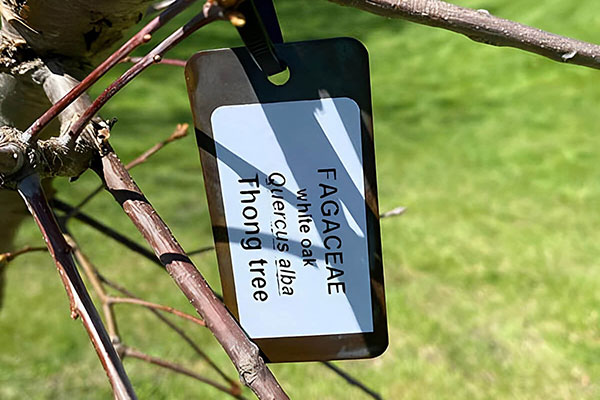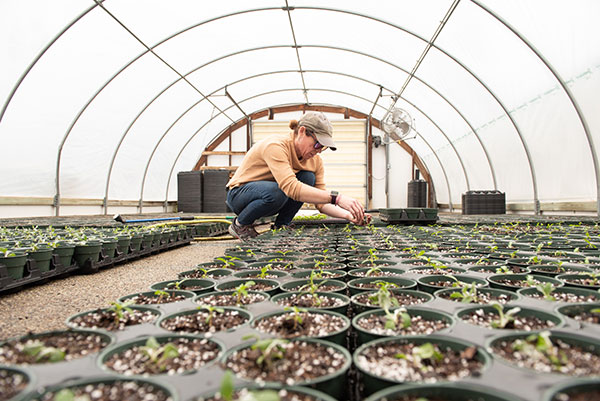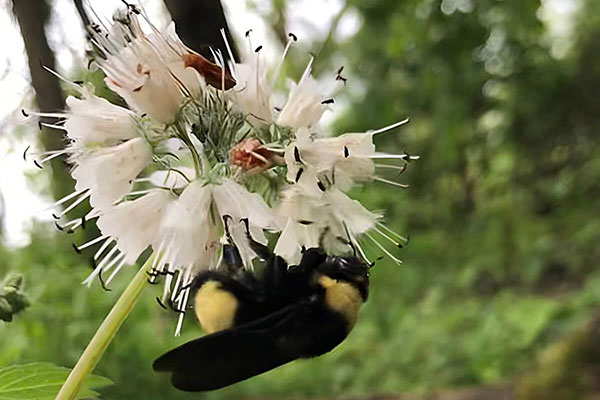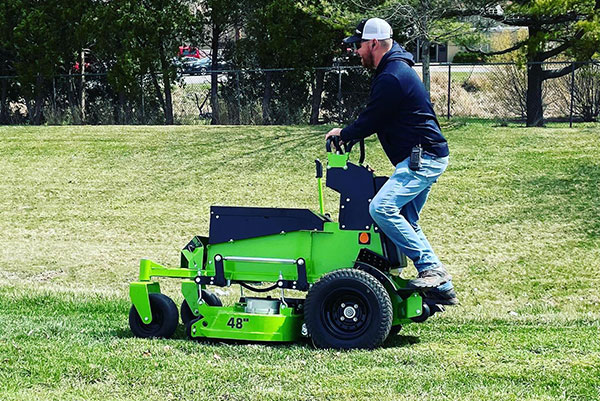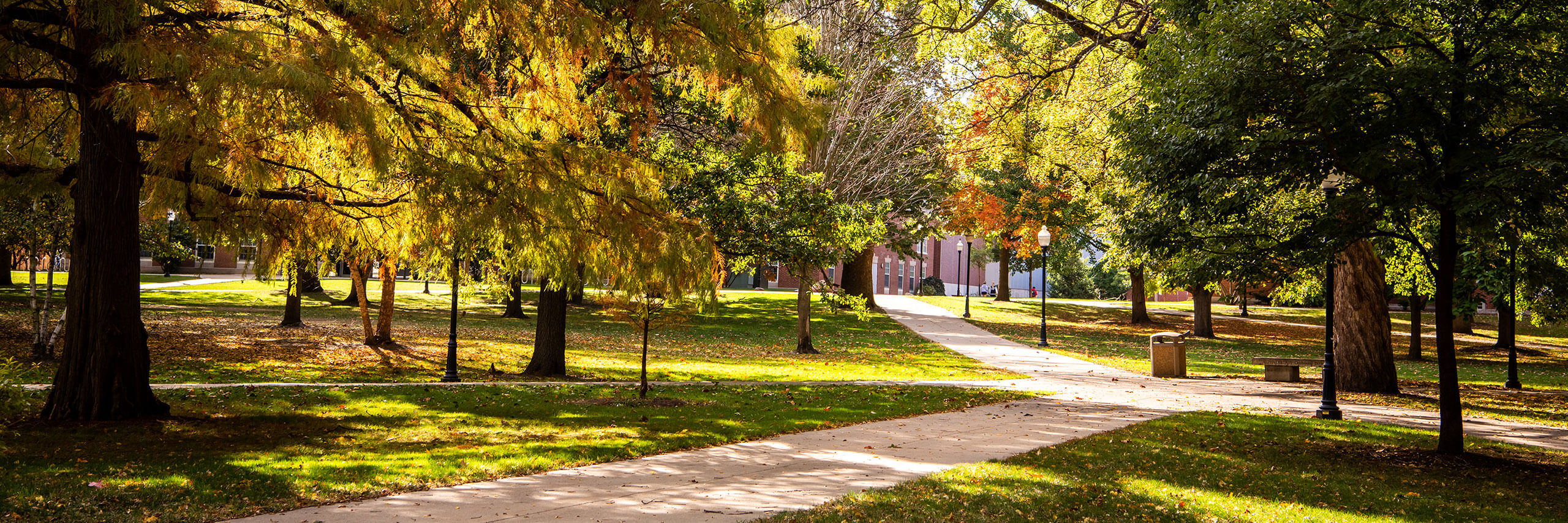
Natural Environment
Natural environments include outdoor landscapes and hardscapes.
Protecting the Ecosystem
Here's how we're sustainably maintaining our natural environments.
-
Integrated Pest Management
We want to preserve the wildlife and plants that are native in our environment. We're pursuing integrated pest and nutrient management approaches to protect people and the ecosystem. These systems base management decisions on tolerance thresholds for pests and nutrient needs of plants.
-
Native Plants
Many plants around campus are native to the Central Illinois area. Our goal is to increase species diversity and native plantings on campus. They provide natural food and shelter for pollinators and wildlife which helps sustain a healthy ecosystem. They also require less water and maintenance.
-
Rain Gardens
These specially-designed gardens drain in such a way that rain helps water all the plants. Our rain gardens include native shrubs, perennials, and flowers planted in a small depression which is generally formed on a natural slope.
You can find a rain garden on the quad and near Turner Hall.
-
White Topping
Some of our parking lots use ultra-thin white topping instead of asphalt. This eliminates the need to remove existing asphalt which reduces landfill waste. It also has twice the life of asphalt, saving money and resources.
White topping reflects light which means we get more natural light with our existing lighting fixtures. This provides a safer environment for everyone on campus.
-
Battery Powered Equipment
Our grounds crew uses numerous battery powered tools and outdoor equipment to maintain our natural environments. Battery powered tools offer the same power and performance as gas-powered tools without the mess, fumes, vibration, and noise associated with equipment powered by fossil fuel. They have zero emissions and are quiet around classrooms, offices, and residence halls.
Many of these tools and equipment were funded by the Sustainability Fund. Learn how you can get funding for a sustainability project.
Illinois State University was built on the land of multiple native nations.
Natural Environments at Illinois State
There are several places on or near campus where you can learn from nature.
-
Fell Arboretum
More than 154 species of trees bring beauty and education to Illinois State. The Fell Arboretum serves as a tree and plant library for academics and enthusiasts. It also makes our campus quad feel more like a park, providing the perfect place to study and connect with each other.
Learn more about the Fell Arboretum

Proud to be a Tree Campus Higher Education Institution
This designation recognizes our ongoing efforts to nurture the Fell Arboretum and engage staff, students, and the community in our conservation efforts.
-
Horticulture Center
The Horticulture Center houses display, teaching, and research gardens for student learning and community enjoyment. The Center is 23 acres which includes a children's garden and a restored prairie. The Center is open to the public every day from dawn to dusk. It's located on Raab Road in Normal, across the street from the Corn Crib baseball stadium.
-
Weibring Golf Club
Weibring is more than a golf course; it's a premier athletic facility managed in an environmentally responsible way. The course is maintained with water conservation, reduced pesticide usage, and wildlife habitat enhancement. In 2018, it was fully-accredited through the Audubon Cooperative Sanctuary Program, joining only three percent of golf courses in the country.
-
Sugar Creek Savanna
This learning laboratory is located between Cardinal Court and the Carter Harris physical plant. The space is a restored oak-savanna urban ecosystem. It's used for environmental research, education, and relaxation.
-
George S. Vasey Herbarium
A herbarium is a collection of preserved plant specimens and associated data used for scientific study. The Vasey Herbarium was established soon after the founding of the university and represents the oldest scholarly collection at Illinois State University. The Vasey Herbarium houses approximately 60,000 specimens representing over 4,500 species.The primary purpose of this collection is to support the educational andresearch function of the Department of Biological Sciences, but it also represents some of the earliest collections of plants in central Illinois, an important resource for conservation and restoration.
Make a positive contribution to natural environments.
Take steps to ensure natural environments thrive.
-
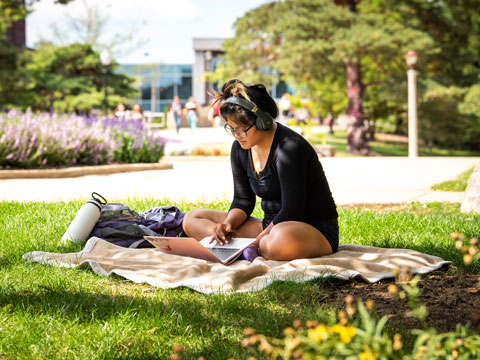
Go outside.
Visit the natural environments we have around campus. It's relaxing and good for your mental health.
-
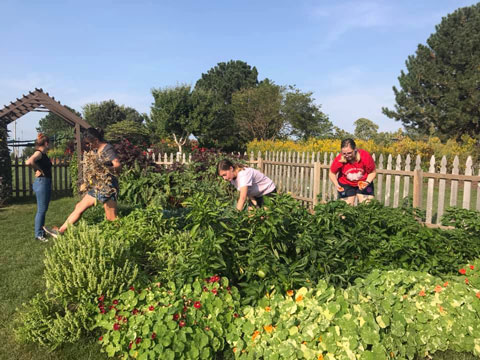
Grow a plant or a garden.
The benefits of tending to a plant can include improving mental health, purifying the air in your home and growing your own food.
-
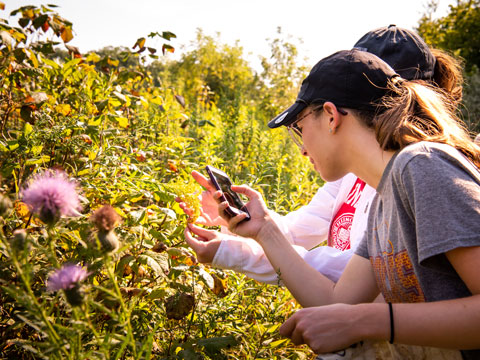
Support plant diversity.
Encourage the planting of a wide array of plant species in your surroundings to create wildlife habitat and reduce pest pressures.
Make Natural Environments Part of Your Academic Experience
Spend time researching and enjoying the outdoors. These academic programs give lots of hands on experience in natural environments and the University Farm.
